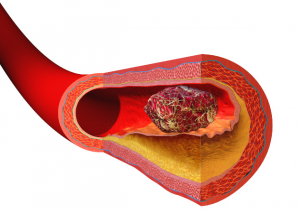Scientists at Imperial College London discovered that low iron levels make blood “stickier” and thus, result in a higher risk of having a stroke. The most common type of stroke, ischaemic stroke, is a result of a lack of blood supply to the brain caused by small clots. These researchers found that iron deficiency increases stickiness of platelets, which cause clotting when stuck together (original article). This connection between iron deficiency and stickier blood was made previously, but its implications are just now being identified.
In this recent study, about 500 patients with a disease called hereditary haemorrhagic telangiectasia (HHT) were studied because their condition allows small blood clots to travel to the brain more often than clots in people without the condition. The patients with low iron were more likely to have a stroke, and their platelets stuck together to form a clot more quickly than those of patients with higher iron levels. More specifically, having a moderately low iron level (about 6 micromoles/liter) about doubled the risk of stroke when compared to the risk with a normal iron level. This is a strong start to proving the link between iron levels and strokes, but more research must be done to fully prove the connection because there are more steps that occur between the clot forming and the stroke occurring.
Scientists are hoping that the newly discovered implications of this research could help lower the risk of stroke in high-risk patients through the monitoring and regulation of iron levels. Could simply raising a person’s iron level help prevent strokes? I believe that further research will reveal a more complex solution involving a process that occurs between the clotting and the actual stroke.



Leave a Reply